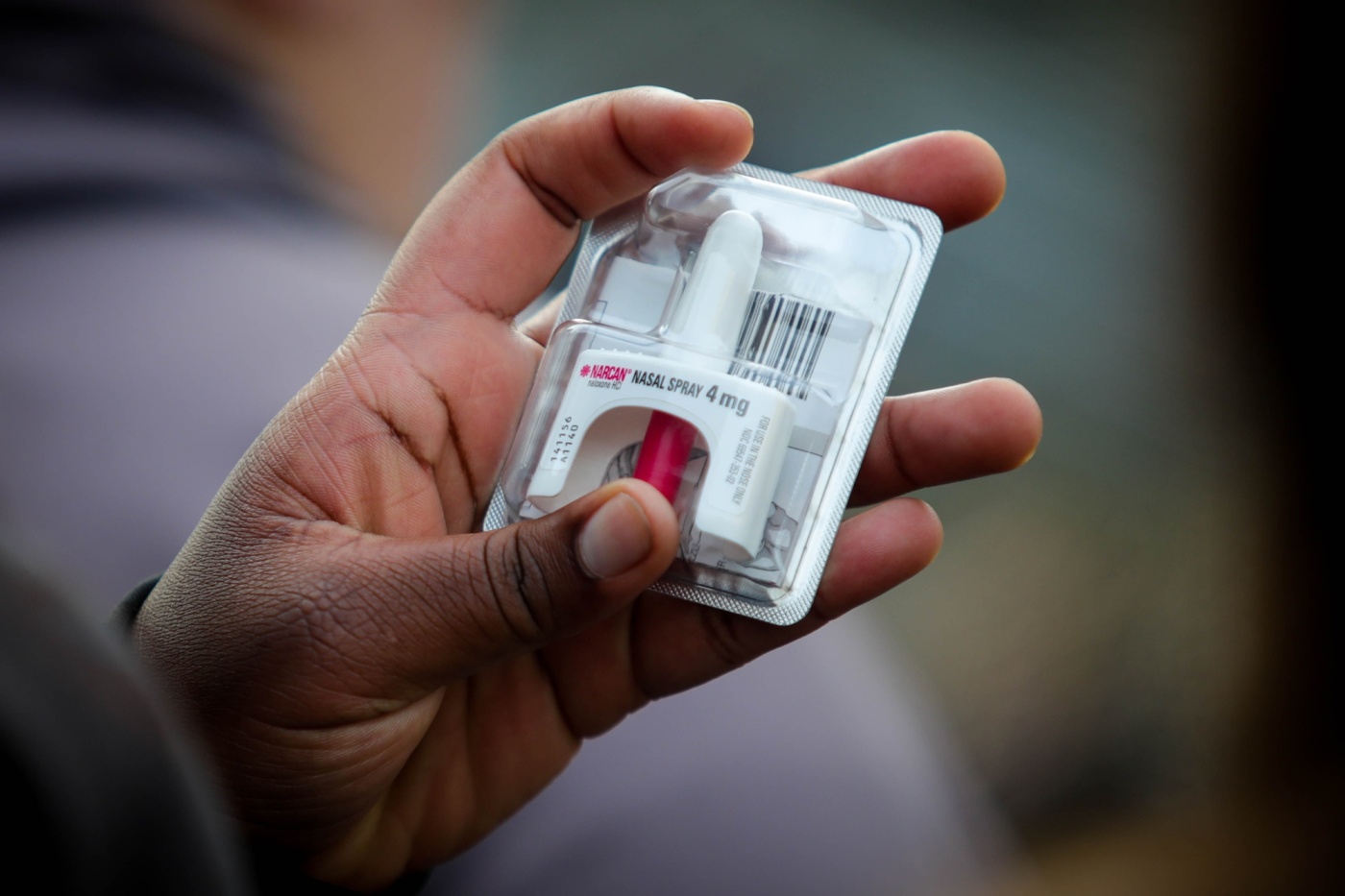High schools in six Orange County school districts are eligible for funding to purchase naloxone supplies under a new grant program OK’d by the Board of Supervisors this week.
The board on Tuesday, Dec. 20 unanimously approved Supervisor Don Wagner’s proposal to allocate funding from his district’s discretionary budget to create six $20,000 grants to purchase naloxone, commonly referred to as Narcan, supplies for high schools in his 3rd District.
Naloxone is a nasal spray that can combat the deadly effects of fentanyl.
It will be up to schools to determine how the funds are used, Wagner said.
Some in his district already have naloxone available on-site. But district representatives said there are additional costs incurred by the school districts, such as staff training, ancillary supplies and replacements of expired medication that this funding could cover.
Seeing a serious increase in fentanyl deaths, Wagner said, was the catalyst that triggered him to introduce this proposal. It garnered strong community support, including from parents, District Attorney Todd Spitzer, Sheriff Don Barnes and local law enforcement departments.
Orange County Supervisor Don Wagner speaks during the supervisors’ meeting in Santa Ana, CA on Tuesday, November 29, 2022. The board approved his proposal to create grants for schools in his district to keep naloxone on site. (Photo by Paul Bersebach, Orange County Register/SCNG)
“Six, eight months ago, we really started digging into how big a problem this is, and then looking for ways to address it,” Wagner said. “We’ve got these high schools that have the first crack at the kids.”
“Police and fire departments have Narcan available, but they’re not always the first ones there. The first ones on-site in some cases are teachers and administrators. So the thought is, let’s get the Narcan in their hands.”
Right now, the grant is just available to schools in his district — Capistrano, Irvine, Orange, Placentia-Yorba Linda, Saddleback Valley and Tustin — but Wagner said he hopes to see it expand.
Wendie Hauschild, communications director of Saddleback Valley Unified School District, said the district has utilized its own funds to purchase naloxone and accompanying kits, as well as provide training for staff.
This funding will allow the district to expand on its efforts, she said.
Related links
Dying in Orange County: COVID-19, fentanyl struck lethal blows in recent years
‘We are not trying to scare you’: In California, fentanyl now behind 1 out of every 5 youth deaths
Countering the deadly scourge of fentanyl in Orange County
“SVUSD’s initial Narcan order recently arrived, and we are currently dispersing it to our sites and beginning employee training,” Hauschild said. “We are greatly appreciative of prospective funding that may be provided so that we can continue to expand the availability of Narcan to multiple locations on our campuses and to replenish when supplies meet their shelf life.”
Orange Unified School District, too, distributes naloxone, provided by the California Department of Health Care Services Naloxone Distribution Project, to school sites, including elementary and special program schools.
All units of naloxone are stored in the nurse’s office at each school site, and training is also underway with the help of the Orange Fire Department, said Hana Brake, a spokesperson for Orange Unified.
And Placentia-Yorba Linda Unified School District also has naloxone available at each of its schools. The district recently received 168 doses of Narcan through the California Department of Health Care Service’s Naloxone Distribution Project at no cost, according to Alyssa Griffiths, director of communications for the district.
The tally of fentanyl-related deaths in Orange County among those 18-44 increased by 100% from 2017 to 2021, mirroring a grim nationwide trend of opioid-involved overdose deaths.
The naloxone supplies will be divided equally among a district’s high schools if it accepts the grant funding, according to Wagner’s office, resulting in about 476 nasal sprays per district.
Wagner said it is imperative that the issue is kept in front of the public so that both parents and children are aware of the danger.
“A lot of parents might say to themselves, well my kid doesn’t do drugs so I don’t have to worry about it,” Wagner said. “But the truth is that we are finding fentanyl lacing, even in prescription or over-the-counter type drugs that a child may use and the parent may think it’s not a source of fentanyl. But it can be a source and we need to get the word out there.”
Earlier this month, in nearby Los Angeles County, at least 10 Van Nuys High School students were treated for suspected overdoses after taking too much of what officials said was cannabis. In September, a 15-year-old Bernstein High School student died after authorities say she ingested a painkiller possibly laced with fentanyl.
Los Angeles Unified School District said it will provide naloxone nasal sprays to schools as well as make available training for health care providers and educational material for parents.
Related Articles
Bill Steiner, ‘champion of childhood,’ dies at 85
County approves transfer of South Laguna beaches; Laguna Beach city lifeguards start hiring
New report details mounting problems at Orange County Power Authority
OC Supervisors: Racism and inequity are ‘public health crisis’
OC Health Care agency to get new $78 million Irvine headquarters





